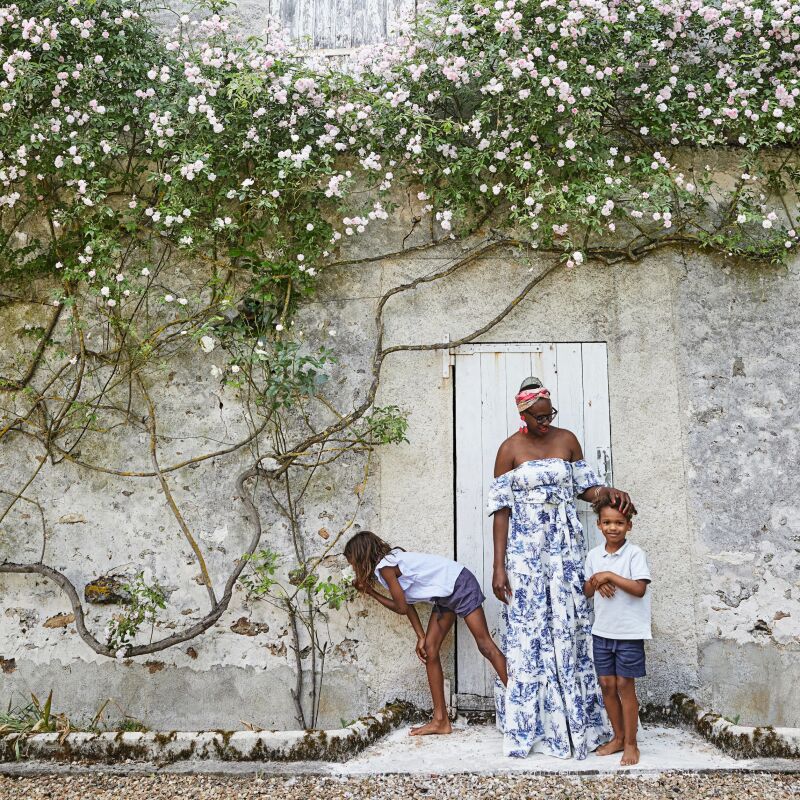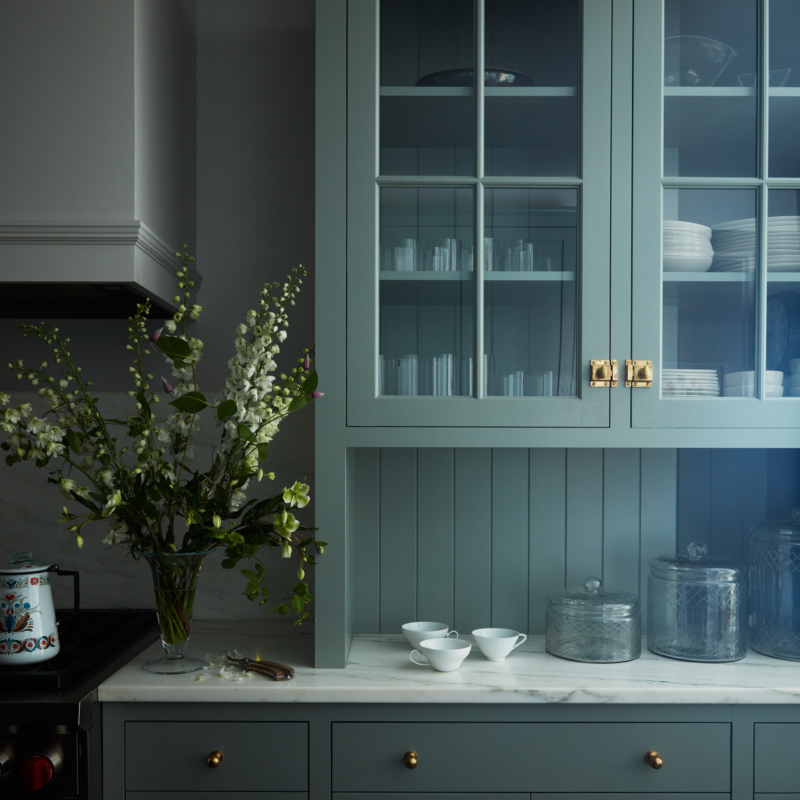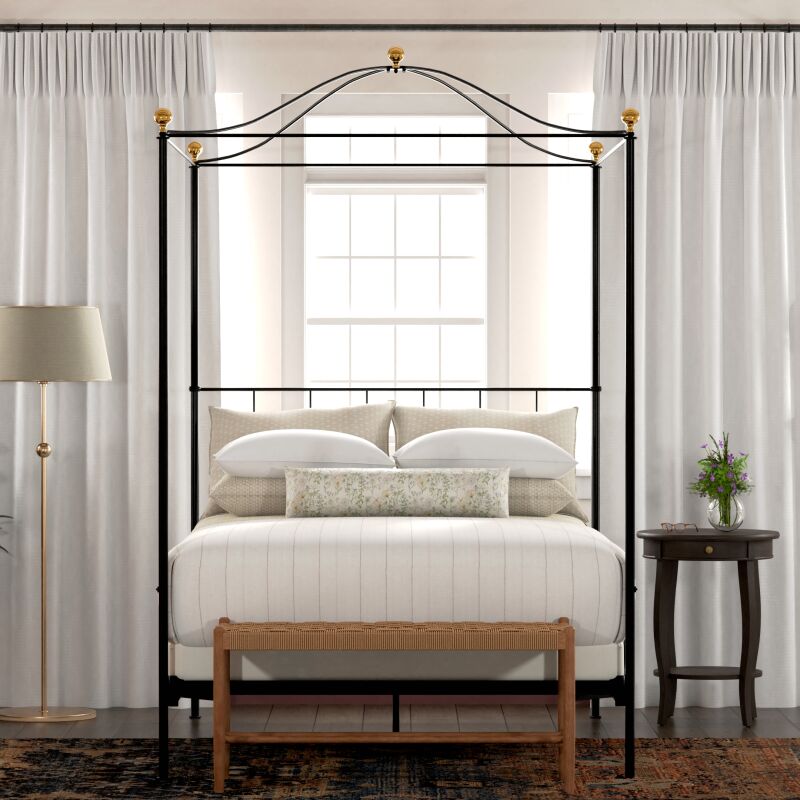With a background in hotel and retail design, Christine and John Gachot of New York’s Gachot Studios take a highly individual approach to their work. The user, not the style, comes first—which is never a bad strategy for private homes or hospitality projects like the Shinola Hotel in Detroit, which the firm completed in 2018. We asked Christine Gachot to share some insights:
- RM: Opposites attract: what’s a favorite material pairing for you?
- CG: We often play with contrasts in regard to setting rather than material. Our own Shelter Island, New York, weekend home is a 1920’s center hall colonial filled with contemporary and mid-century modern furniture: Charlotte Perriand library table, Alvar Aalto stools. Or think of an old Parisian apartment filled with the new pieces—it works every time. Historic architecture can act as a theatrical setting and a wonderful juxtaposition with more streamlined furniture.

- RM: The essential light fixture.
- CG: Noguchi’s Akari rice-paper lamps. Not only do these fixtures give the warmest glow, they are pieces of art in a room.
- RM: The best countertop material.
- CG: Well, playing off your last question, we used a teal blue concrete bar top for the Royal Palm Shuffleboard Court in Brooklyn. But our go-to for residential design is Imperial Danby marble out of Vermont. It’s super durable and goes with everything.

Above: The Gachot’s light-flooded Shelter Island dining room, photo by Ngoc Minh Ngo courtesy of Gachot Studios. - RM: Your go-to neutral paint color.
- CG: Farrow & Ball’s Wimborne White.
- RM: Concrete, yes or no? Favorite use and finish?
- CG: Yes! It can be a really rich texture. We’re currently collaborating on a home with Walker Warner Architects in San Francisco, and they’re using concrete as a primary interior material; we are trying to hit a balance of warmth with the millwork and furnishings. Ten years ago, I led the design development of the Standard High Line hotel in New York, which is a favorite reference point for board-formed concrete on a contemporary exterior. Seeing that pour live was like watching an episode of Modern Marvels—we all had seats lined up to experience it!

- RM: Unsung hero in your work?
- CG: A basic material like tile, used in an interesting way, always succeeds—it’s a work horse. We did a custom Delft tile for a residence that was based on art work by the client’s young family members. We also cross-pollinate ideas from commercial to residential projects all the time. It’s about the high-low.
- RM: What do you like to exaggerate, and why?
- CG: Function first. In our hospitality work, the back-of-house spaces are as important to the end user as the front-of-house guest experience. This translates to private residential projects. You want the hamburger to get from the kitchen to the dining room without getting cold.
- RM: What do you minimize, and why?
- CG: Ego! It’s all about collaboration. The best ideas can come from anywhere, and we’re open to that. Clients are so well-informed; their knowledge and access to design is endless in the age of Instagram. We also take advice from people who are skilled at their crafts—the person laying the tile, etc.
- RM: Your signature move in the kitchen?
- CG: We love a good pantry, and you don’t need a lot of room for it. But I do like a little counter space for treats. I rock a candy display!

- RM: What material is worth the splurge?
- CG: It’s always wise to save your money for key pieces that will grow with you. I still don’t own a coffee table at our loft in New York because I can’t afford the one I want—I’ll save and wait. We suggest that clients invest in the things you touch: hardware, switches, plumbing fixtures and fittings. We just designed a collection for Waterworks called Bond—it’s a comprehensive line of fixtures and fittings. Our goal was to design pieces that were modern in form but unique and inviting. It was important to us that the line strike a balance between distinctiveness and timelessness – because ultimately these things are investments in your home that you want to last a lifetime.
- RM: Smartest “smart house” feature.
- CG: Nest and Sonos have made home technology accessible and affordable. They are user-friendly and easy to install. Nest is known for their thermostats, but they also make a great home security system, and the sound quality with Sonos is top-notch.
- RM: How small can a bedroom get before it’s claustrophobic?
- CG: Small! Our main bedroom in New York is 10-by-10 feet, but it feels super cozy because you enter through a paneled doorway. There is just enough space for the bed and a small vanity area. We only have one bathroom in the family loft, so getting creative with additional space for our morning routine was important.
- RM: What gesture do you often repeat within a house?
- CG: While we like to have an underlying architectural backdrop, we consider individual areas from the point of view of the user. It’s not a design thesis, it’s thinking about the people who are inhabiting the space.
For more expert advice, see:
Expert Advice: 13 (Great) Questions for Architect Gil Schafer
Expert Advice: How to Hire a Truly Great Painter for Your Home
Expert Advice: 23 Genius, Reversible, Budget-Friendly Hacks to Transform a Rental Apartment






Have a Question or Comment About This Post?
Join the conversation